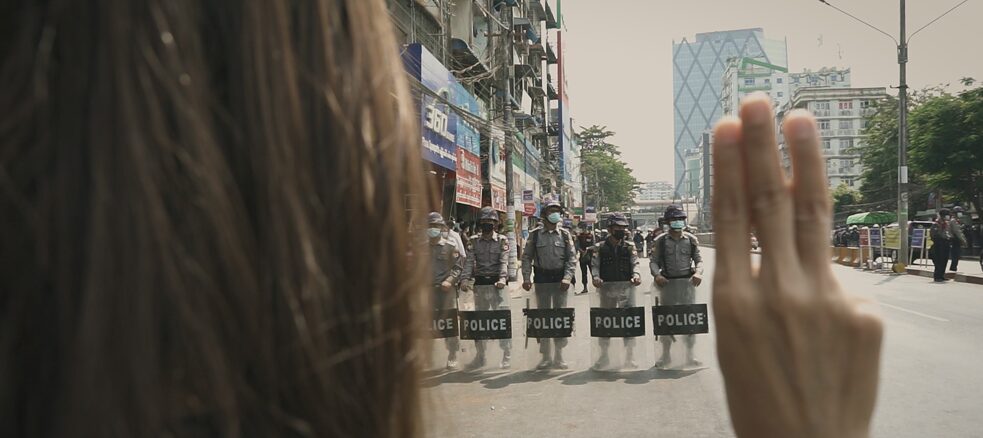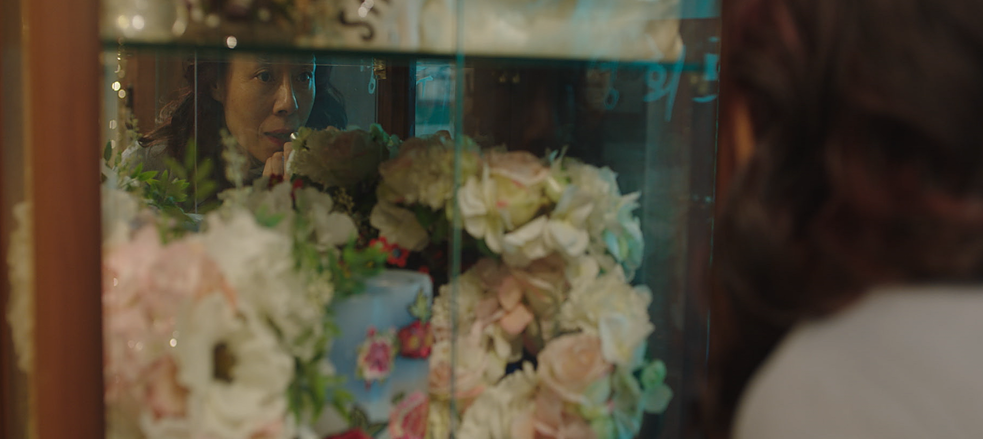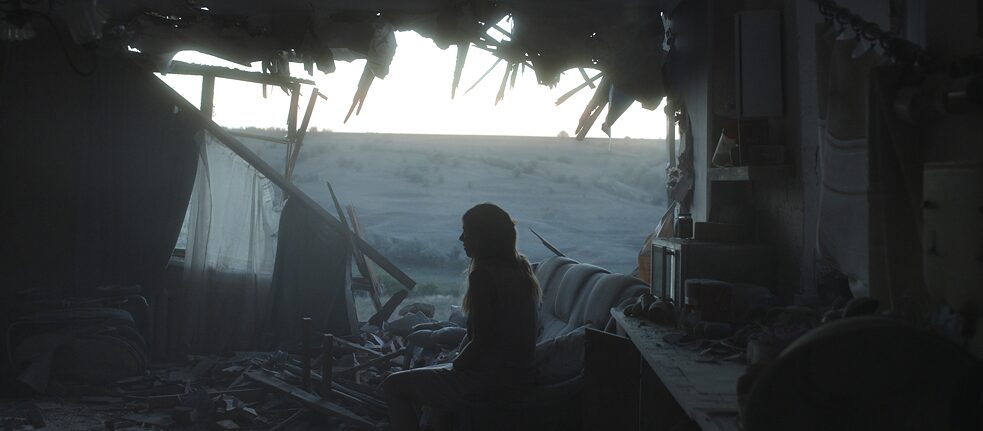Berlinale 2022
The Most Important Thing is Openness

International, emotional, immediate: the Berlinale “Panorama” section tracks down some outstanding works on the international cinema scene. In this context, the focus is on bold and unconventional feature films and documentaries that occupy a space close to the social and political zeitgeist. Michael Stütz, head of the Panorama section, talks about the most important themes and trends – and tells us what’s so special about his work.
By Ana Maria Michel
Mr Stütz, you have been head of the Panorama section since 2019, and you had already been involved in this section for a long time before that. What made it so special for you when you first started there?
I was interested in the focus on queer and feminist cinema, which sometimes approached the patriarchy in a critical way and aimed to offer the audience an alternative perspective. The previous Panorama heads, Manfred Salzgeber and Wieland Speck, had been developing a market for this orientation since the start of the 1980s. I was fascinated by how successful they had been in establishing an audience for these films and repeatedly challenging them.
How many films do you see on average, and how many of them make it into the programme?
There are so many films that it would be impossible for me to watch each individual one. We work as a team so that every film receives the attention it deserves. Many of them would be good enough for screening. Sometimes it’s a painful process deciding on your programme selection. In 2022 we’re screening 29 entries in the Panorama section, of which 19 are feature films and ten are documentaries. In my opinion it’s a very strong cohort this year, and some impressive cinema with films that are made for the big screen.
What criteria do you use for selection?
It’s difficult to put it in a nutshell. For me the most important thing is to bring openness, and not have a closed mind with regard to certain themes, dramatisation ideas or aesthetic performances. Time is also important, because you have to process and discuss what you’ve seen. Sometimes you suddenly have a different perspective on a film after a few days. That’s precisely what’s so thrilling.
What themes are covered in the Panorama programme this year?
The entries are extremely broad ranging this year. Family is always a theme, and this time is no exception. I think it’s great that you come across such a variety of narratives and life perspectives here. One thing stands out – the fact that there is a strong focus on mothers this year, in both feature films and documentaries.
Why mothers in particular?
There have been years in which everything revolved around fathers. To a certain degree that’s likely to be coincidence. But motherhood and the role of mothers as society’s caring figures is highly in demand this year and is being brought to the screen with a critical yet personal perspective.
 One of the focus themes this year: the role of mothers. The film “The Apartment with Two Women” by Kim Se-in is about a difficult mother-daughter relationship.
| Photo (detail): © Koeran Academy of Film Art
How are films doing this?
One of the focus themes this year: the role of mothers. The film “The Apartment with Two Women” by Kim Se-in is about a difficult mother-daughter relationship.
| Photo (detail): © Koeran Academy of Film Art
How are films doing this?
In a variety of ways. For instance there are stories that address a family microcosm with toxic structures, an example of which is the South Korean feature film The Apartment with Two Women by Kim Se-in, which looks at a relationship between mother and daughter. Overall you could say that our film programme this year is very relentless and painful, but at the same time films are attempting to achieve reconciliation. Not necessarily in the conflict itself, but a reconciliation of the characters with themselves. As a result, I feel that this year’s entries have an extremely authentic feel, which I find very moving. That’s precisely what’s typical of Panorama: it’s emotional, immediate cinema. For instance we have the beautiful Swedish documentary Nelly & Nadine by Magnus Gertten about grandmothers, mothers and granddaughters. It’s about the Holocaust – an exceptionally painful chapter in history and for this family – but it’s also a triumphant lesbian love story.
Does the coronavirus pandemic play a role in the films?
We’ve seen a few films in which people were wearing masks. In others the pandemic has been made directly into the subject of the film. But in the end, none of these films made it into the programme – although Covid wasn’t an exclusion criterion. Most of the films we’re screening in Panorama were initiated and written before the pandemic. The focus on family can’t necessarily be seen as an effect either. I think that being forced to rely on yourself is something that had already happened in our society before coronavirus.
What other developments had there been in earlier years in Panorama?
With regard to themes, there are certain cycles. Obviously contemporary trends are reflected in the programme to some extent, an awareness of world events. On the other hand there are films where there are not really any overlaps at all with the current political climate, at least not at first glance. I think it’s exciting when a political story is told through very personal narratives. But there are also fantastic films that state far more clearly that they are moving out of a private setting and into something political – for example Klondike from Ukraine by Maryna Er Gorbach, which is set in 2014 and focuses on the war with Russia. One positive development in Panorama is certainly the gender balance amongst the filmmakers. We haven’t quite hit fifty per cent this year, which is a shame. Of 29 films, 13 are directed by women, one is by a non-binary person and we’re screening one film by an anonymous collective.
 A subject that couldn’t be more topical: “Klondike” by Maryna Er Gorbach is set in 2014 in Ukraine – it’s about the war with Russia.
| Photo (detail): © Kedr Film
A subject that couldn’t be more topical: “Klondike” by Maryna Er Gorbach is set in 2014 in Ukraine – it’s about the war with Russia.
| Photo (detail): © Kedr Film

It’s exciting when a political story is told through personal narratives. But there are fantastic films that are moving out of a private setting and into something political.
Not only does Panorama have an audience prize, you’re also responsible for the Teddy Award, a queer film prize for all sections. Why has Panorama in particular become the place for queer cinema at the Berlinale?
In 1980 Manfred Salzgeber set out to restyle Panorama, which up to that point had been called “Info-Schau”. Before that he had been one of the founder members of the “Forum” section, in which trailblazing films were being screened back in the 1970s – by directors such as Rosa von Praunheim. Manfred Salzgeber was an activist, he was openly gay. Since then, gay, lesbian and feminist themes have been strongly represented in Panorama. Over the decades, queer-themed films have also been entered in the rest of the festival programme.
How has queer cinema changed?
For a long time it was mostly about gay, white middle-class and coming-out stories. Nowadays there’s a broad spectrum of themes and forms, which shows that this is no longer niche cinema. Queer cinema does not want to be subject to limitation. The gay stories are still there, but they are no longer the sole focus. Queerness in a film can by all means be a fact that doesn’t require further discussion.
What do you enjoy more? Selecting films for the programme, or presenting them at the Berlinale?
Of course it’s incredibly exciting watching them. But for me the greatest privilege is being able to present a film as well. Going on stage, welcoming a film team there and discussing the film. I also think that the cinema experience can cause the audience to critically examine certain attitudes of their own. It’s a wonderful thing when ideas from the cinema are borne out into real life.